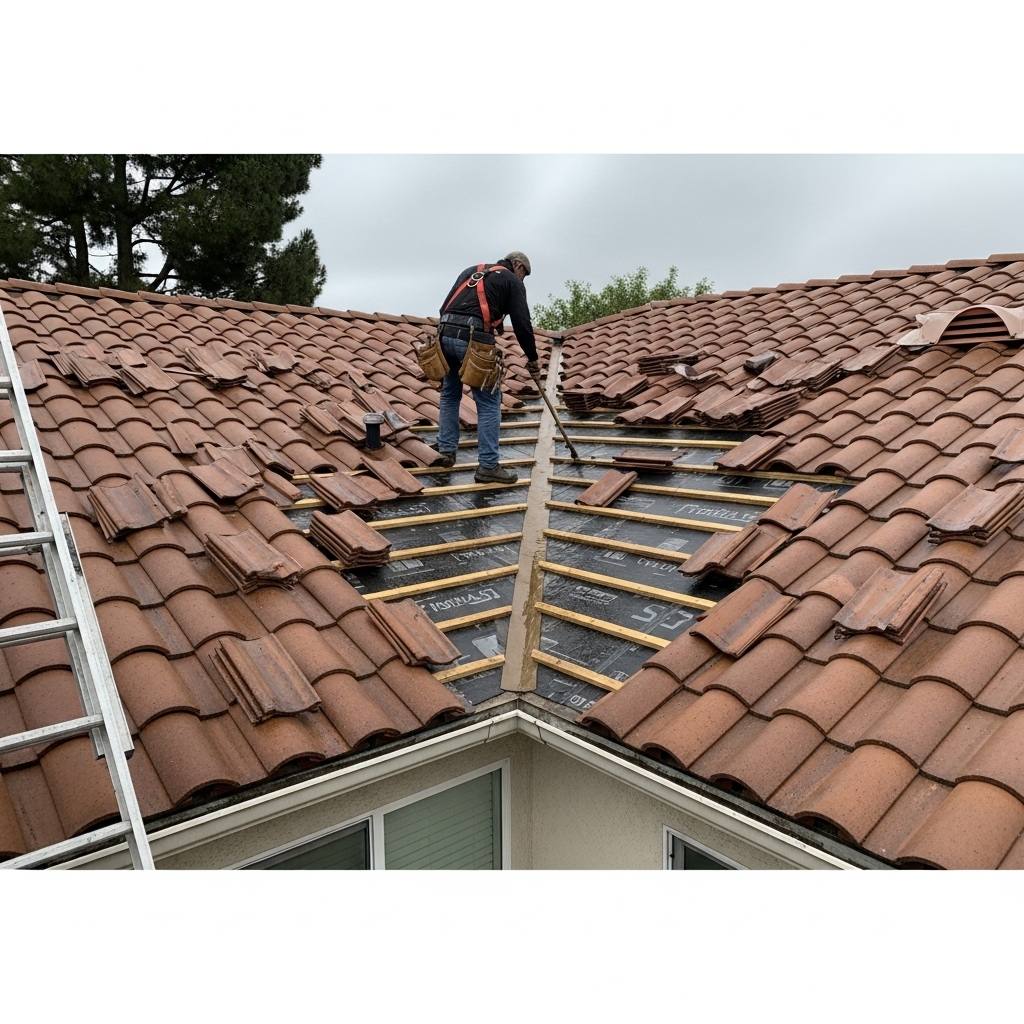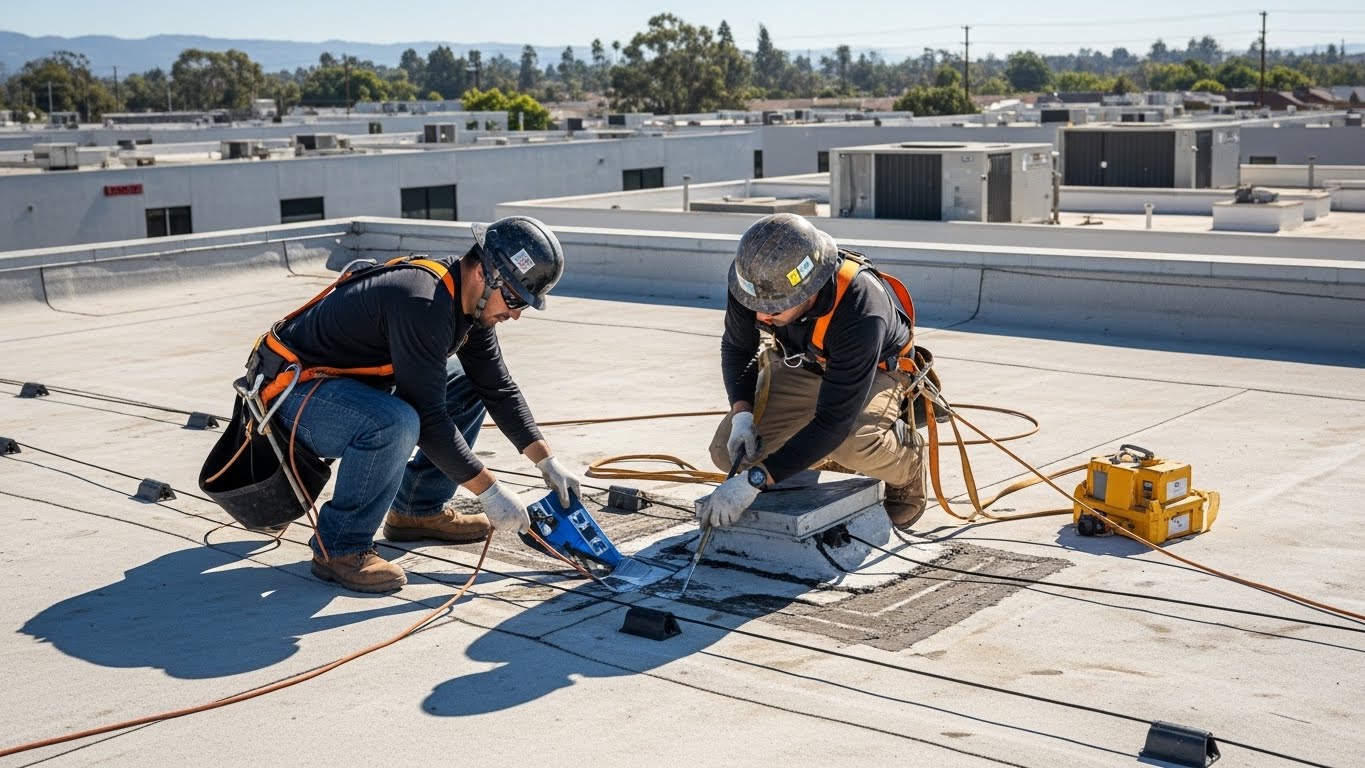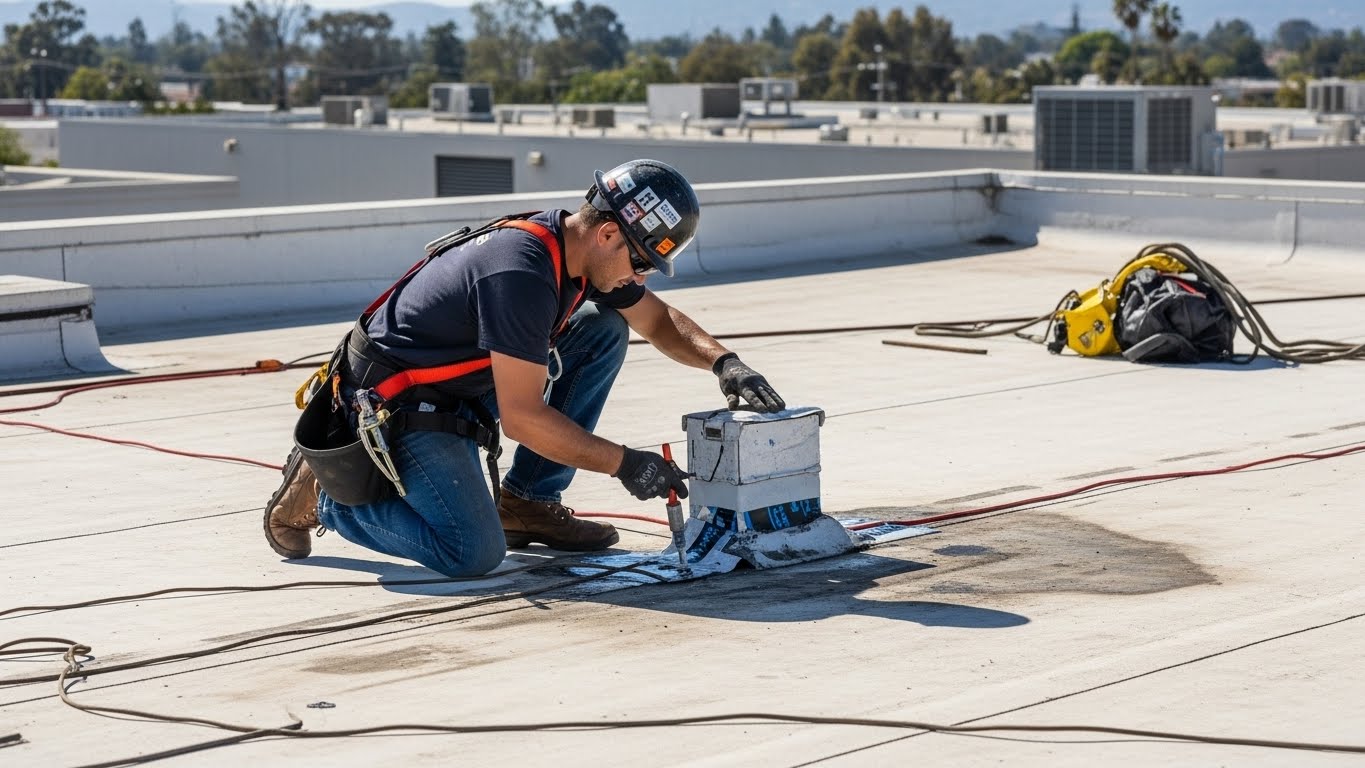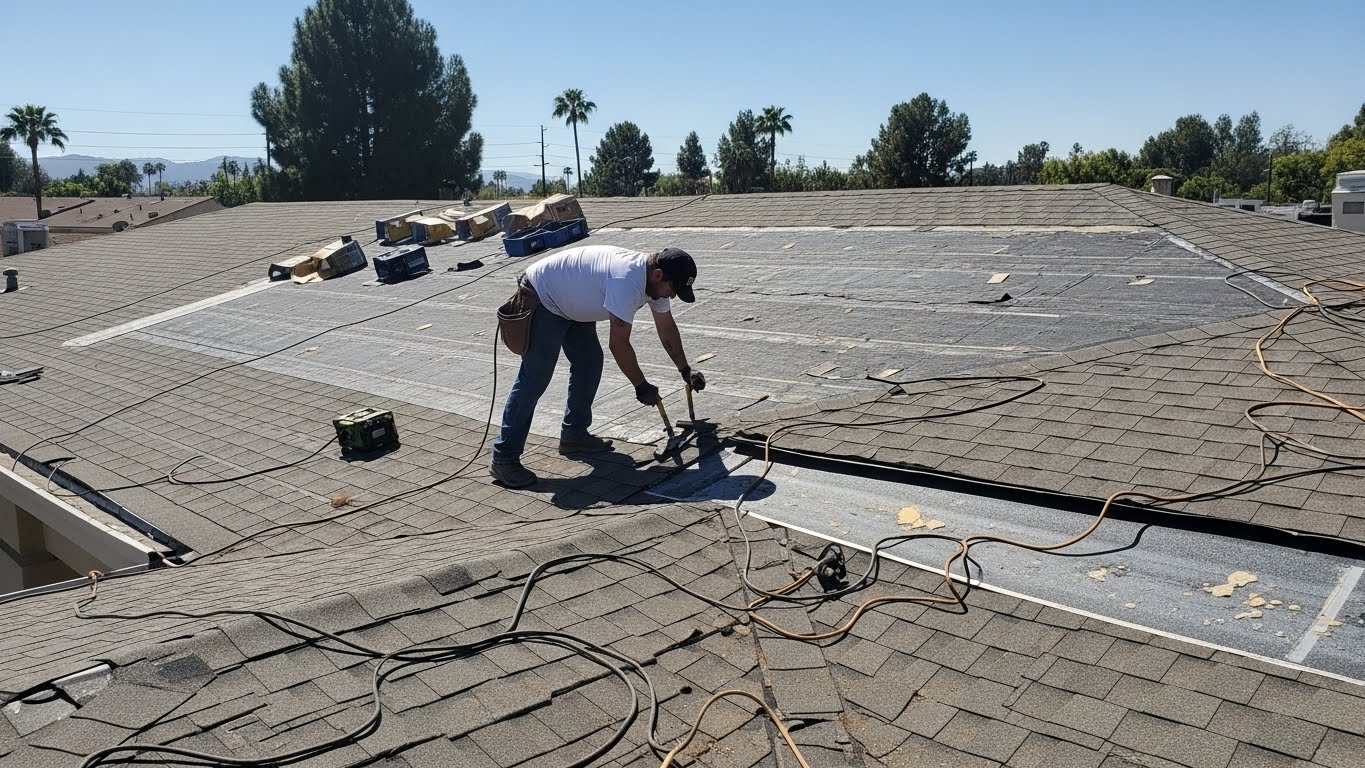If you live in Tarzana, you know our weather can lull you into forgetting about your roof until the very moment a rare but stubborn rain, a night of heavy marine layer, or a gusty outflow from the hills turns a quiet ceiling into a stained patch or an annoying drip. As a local roofer who spends most days on the ridgelines above Ventura Boulevard and the condo courtyards tucked off Reseda and Yolanda, I can tell you that the difference between a small stain and a serious leak is usually measured in hours, not months. That urgency is exactly why homeowners and HOA managers reach out to us for experienced roof repair that respects the quirks of Tarzana’s homes and condos and the way water really moves through a roof system in our valley climate.
Tarzana’s mix of architectural styles keeps roofers honest. We move from Spanish tile bungalows with steep hips to two-story shingle homes with dormers, and then into the denser complexes where a single roof plane might serve multiple townhomes, broken up only by party walls and parapets. Each style has its own leak patterns. On tile roofs, for example, the tile is just the armor, not the waterproofing; the underlayment does the real work. When that underlayment ages, cracks, or gets displaced by foot traffic, wind-driven rain finds a path that may only show itself ten feet away from where it entered. On composition shingle roofs, most issues start at the transitions—valleys, vents, skylights, and where the roof meets stucco. In condos with flat or low-slope sections, ponding water around drains and scuppers quietly tests every seam and every penetration.
What surprises most people is the distance a leak can travel before you see it. Tarzana’s afternoon heat and cool nights create daily expansion and contraction cycles that encourage water to migrate along felt, rafters, and even insulation. A stain in a bedroom might originate at a lifted shingle two rafters over, or at a cracked pipe boot near a ridge vent. That’s why the first step in any effective leak repair is not patching—it’s mapping. We trace water pathways from the visible evidence back to the most likely entry points, working both above the roof and from inside the attic if access is safe.
Our inspections are methodical but efficient. We look for shingle tabs that have lost adhesion, popped nails that create micro-lifts, and flashing that’s separated from stucco due to minor settlement. We check skylight curbs for hairline cracks in the corners, test pipe boots for flexibility, and assess whether past repairs used compatible sealants. In tile assemblies, we remove a measured number of tiles to evaluate the underlayment condition and the battens. In condos, we give extra attention to shared elements: parapet cap flashing, scupper details, and the connection points where a sloped plane transitions to a flat patio roof. Every minute spent diagnosing pays off in a repair that holds through the next storm, and the next season of heat.
For single-family homes with shingle roofing, a durable leak repair usually involves reseating or replacing affected shingles, renailing to the correct depth, and reinforcing the area with an ice-and-water barrier or high-quality underlayment before reinstalling top layers. Where metal or step flashing meets stucco, we carefully open the stucco cut if necessary, clean the surface, and reset the flashing with proper overlaps, counterflashing, and sealant suited to our UV exposure. Around penetrations, we replace aged pipe boots and ensure the surrounding shingles shed water correctly—a detail often missed in quick patches that rely on mounds of caulk instead of geometry and gravity.
Tile roofs demand a different touch. Walking them incorrectly can break tiles and make a small leak worse. We distribute weight, remove the minimum number of tiles to expose problem areas, and install updated underlayment where needed, tying into the existing system with precise laps. In the valleys, where debris tends to accumulate and slow water flow, we clear obstructions and verify that the metal valley flashing is properly centered and free of pinholes or corrosion. At headwalls, we ensure the tile pan flashings are correctly seated and the counterflashing is intact, so wind-driven rain cannot curl behind the protective layer.
Condos and HOAs add layers of logistics, but the technical principles are the same. The difference lies in coordination: we communicate with managers, schedule around resident needs, and document our findings with photos so everyone understands why a repair is recommended. On buildings with multiple roof types—say, a sloped tile field feeding into a flat section over a breezeway—we pay close attention to how water transitions between systems. We often find that small adjustments to drains, scuppers, or small sections of membrane can reduce ponding and extend the life of the entire assembly beyond the immediate leak fix.
Mid-slope details deserve special mention. Many Tarzana homes have stucco sidewalls where a second-story wall meets a first-story roof. If the original step flashing was interrupted by a remodel, or if stucco repairs sealed the relief cut too tightly, capillary action can pull water under the flashing and behind the paper. Our solution is surgical: open the joint, reset the step flashing in the correct sequence, and install a proper counterflashing or reglet detail. We pair that with a sealant that tolerates our valley temperatures, ensuring movement does not immediately tear the joint. It’s here, in these subtle transitions, that a comprehensive roof repair strategy outlasts a temporary patch.
Skylights are another frequent suspect. A skylight that never leaked for years can suddenly show moisture after a windy storm. Often the culprit is not the skylight lens or frame, but the flashing kit or curb. We re-secure the flashing, check the weep holes, and make sure no roofing material blocks the designed drainage path. Where older units have failing foam gaskets or cracked corners, a careful rebuild of the curb with new underlayment and flashing can return the assembly to like-new performance without replacing the skylight itself.
Attic conditions play a bigger role than most people expect. Without adequate ventilation, moisture can condense on the underside of the roof deck during cool nights, masking itself as a “leak.” We look for balanced intake and exhaust, unobstructed soffit vents, and vents that have not been painted shut or screened so tightly that they starve airflow. Improving ventilation not only reduces moisture but also lowers attic temperatures, extending shingle life and making your repair investment go further.
Maintenance is the quiet hero of leak prevention. Clearing debris from valleys and gutters before the first storm, checking sealants around penetrations, and trimming back branches that rub on roofing can eliminate many of the most common problems we see each fall. For condos and larger complexes, scheduling seasonal walkthroughs helps catch small issues—like a lifted parapet cap or a clogged scupper—before they turn into unit-damaging leaks that frustrate residents and managers alike.
One of my favorite examples of smart leak repair happened in a small Tarzana courtyard home where the owner noticed a ceiling stain after a blustery storm. The roof was relatively young, but the stain kept growing after each wind event. Our inspection found that a tiny section of step flashing had been skipped during a prior satellite dish removal, leaving a narrow path for water on windy days. The fix required only a handful of shingles and a few flashing pieces, but we went further—rebalancing the attic vents and refreshing adjacent sealants—so the whole area performed as a system. The stain never returned, and the owner gained peace of mind before the next round of winter rains.
In a nearby townhouse complex, we faced a different challenge: a low-slope walkway roof that linked two buildings was ponding after every sprinkle, overwhelming the scuppers and sending moisture under the transition flashing. We re-pitched the insulation slightly, enlarged the scupper openings within the confines of the existing metal, and installed a new field membrane with reinforced corners where traffic was highest. Combined with improved housekeeping to keep leaves out of the drains, the leak stopped and the walkway dried faster after every storm.
If you invite us out for a leak assessment, here’s what to expect. We begin with a conversation about when the leak shows up—steady rain or only in wind, after fog or only during downpours—and then we correlate your description with what we see on the roof. We photograph problem areas, explain the why behind each recommendation, and, once approved, perform the repair with materials that make sense for your roof type and age. We leave the site neat, provide after-photos, and offer guidance on what to watch for in the next storm. For condo boards and HOAs, we package our findings so they’re easy to share with residents and board members.
Durable leak repair is about respecting water’s behavior and our climate’s extremes. In Tarzana, that means building details that stand up to high UV, big daily temperature swings, and the occasional wind-driven rain that tests every weakness. It’s not glamorous work, but there’s a quiet satisfaction in seeing a ceiling stay dry through a storm that used to cause a drip. When done right, leak repairs buy time—often years—until larger replacements are genuinely necessary, and they preserve the character and comfort of the homes and condos we all value.
How do I know if the stain on my ceiling is from a roof leak or from condensation?
Timing and location are good clues. Stains that grow during or immediately after rain or wind-driven storms often point to a roof leak, especially if they are near exterior walls or below roof penetrations. Stains that appear after cool nights and disappear on warm days can be related to attic condensation, particularly in homes with limited ventilation. A targeted inspection can usually distinguish between the two quickly.
Can you repair my roof while it is raining?
We can mitigate active leaks during rain with safe, temporary measures like strategic tarping or temporary flashing, but permanent repairs are best performed in dry conditions so materials bond correctly. If a storm is ongoing, we focus on stopping interior damage first and return promptly for the lasting fix as soon as weather permits.
Do you work with HOAs and property managers?
Yes, frequently. We coordinate access, document conditions with photos, and provide clear recommendations. For multi-unit buildings, we prioritize repairs that protect shared systems and reduce the risk of repeat leaks in adjacent units.
Will a leak repair match my existing roof?
Our goal is a watertight repair first, with a clean, blended appearance. On shingle roofs, we source the closest match available and install repairs in less-visible areas wherever possible. On tile roofs, we reuse intact tiles and replace broken ones with compatible profiles so the finished area looks seamless from the ground.
How long will a leak repair last?
Longevity depends on roof age, materials, and where the leak occurred. A properly executed flashing repair on a relatively young roof can last many years. If the roof is near the end of its service life, a repair can buy valuable time, but broader replacement planning may make sense. We share realistic expectations after inspection.
What are the most common causes of leaks in Tarzana?
Wind-driven rain at wall-to-roof transitions, aged underlayment on tile roofs, UV-degraded pipe boots, and debris-clogged valleys and scuppers are frequent culprits. Our temperature swings also encourage fastener movement, which can lift shingles or open seams over time.
Do you offer emergency response?
We prioritize active leaks that threaten interiors. If you call during a storm, we will advise on immediate steps and aim to stabilize the situation quickly, then schedule the permanent repair as soon as conditions allow.
When you are ready to stop worrying about stains and drips and want a solution that respects your home or condo, we are nearby and ready to help. Reach out for expert guidance, a thorough inspection, and a repair that is designed for our local conditions—and get your schedule back without the anxiety of the next forecast. To talk with our team or book a visit, request your trusted roof repair today and let’s keep your Tarzana roof dry and dependable.






